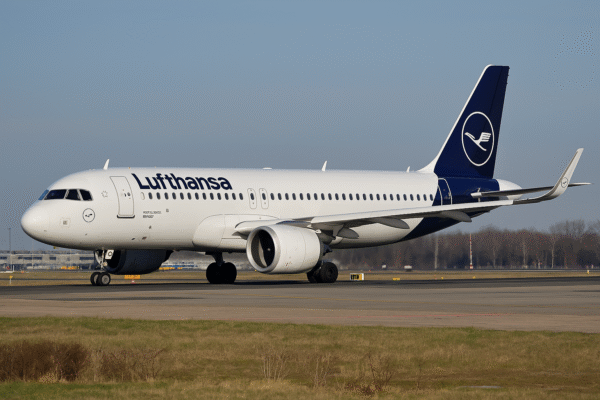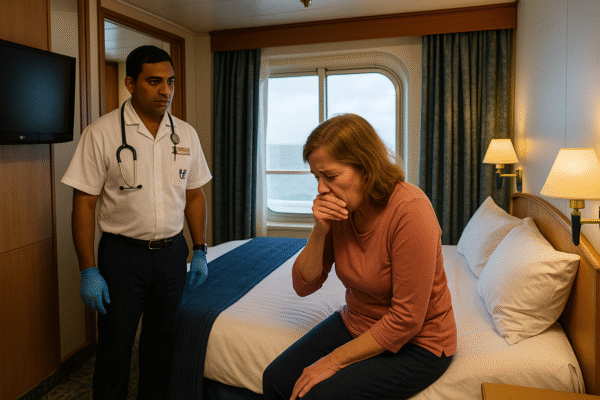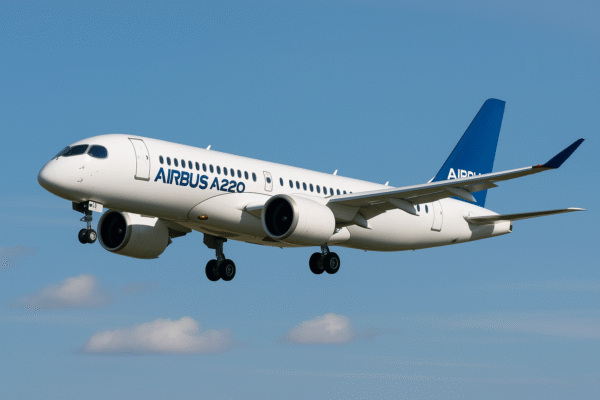European aerospace giant Airbus SE is actively evaluating the development of a stretched version of its A220-300 jetliner, in an effort to boost passenger capacity and reenergize sales amid a slowing order pipeline. The potential new variant, informally dubbed the A220-500, is being positioned as a fuel-efficient and modern alternative to smaller Airbus A320 and Boeing 737 Max models.
As anticipation builds ahead of the Paris Air Show 2025, industry insiders confirm that Airbus has engaged several airline customers to gauge interest in the extended model. Notably, talks with AirAsia are reportedly underway for a possible order of up to 100 A220 aircraft, although no official deal has been announced.
Responding to Market Headwinds
Despite early enthusiasm around the A220 family, which Airbus acquired from Bombardier Inc. in 2018, the program has struggled to maintain momentum. As of the end of May 2025, Airbus reported a total backlog of fewer than 500 units, with no new orders and one cancellation this year—casting a shadow over the aircraft’s commercial performance.
The A220, formerly known as the C-Series, was initially lauded for its fuel efficiency and passenger comfort, making it an ideal fit for short-to-medium-haul routes. However, its limited capacity in comparison to the A320neo and Boeing’s 737 Max has posed challenges for widespread adoption—especially by carriers prioritizing volume over range.
A stretched version would expand the aircraft’s capacity, making it more competitive in high-density markets. However, the trade-off is a reduction in range, potentially preventing the A220-500 from servicing transcontinental routes across the U.S. This limitation may dissuade some North American carriers, though others—such as Air France-KLM—reportedly support the idea, as their operational models don’t require coast-to-coast range.
Strategic Simplicity Over Costly Overhauls
Rather than undertake an expensive engineering overhaul, Airbus is favoring a simplified design approach that would maintain the existing engine and wing configuration. According to sources close to the development, this strategy would significantly cut development costs and timelines, helping Airbus avoid complex certification challenges associated with an entirely new airframe or engine system.
Crucially, sticking with the Pratt & Whitney GTF engine already used on existing A220 models could help Airbus steer clear of further complications. Pratt is currently grappling with a major repair program for its GTF engine family, which has resulted in grounded aircraft across several fleets worldwide. A new engine variant would require extensive redesigns to the aircraft’s wing and pylon, potentially adding billions in cost and delaying the program by years.
A straightforward fuselage extension would also ease the regulatory path, as certification could lean heavily on the design similarities with the A220-300, reducing the number of new compliance checks required.
Industry Dynamics: Supply Constraints, Soaring Demand
The proposal comes at a time when both Airbus and Boeing are sold out into the 2030s for their bestselling narrowbody jets—the A320neo and 737 Max. With the airline industry ramping up post-pandemic expansion plans, carriers are increasingly pressed to modernize their fleets, but limited delivery slots are forcing them to consider alternatives.
The A220-500 could fill a significant market gap between regional jets and mainline narrowbody aircraft, especially for low-cost and short-haul carriers looking to expand their reach. Its entry into the market would offer airlines a newer, more efficient solution with fewer maintenance demands than aging regional models.
According to analysts, the global narrowbody aircraft market is expected to witness double-digit growth over the next decade, fueled by airline expansions in Southeast Asia, Africa, and secondary European hubs. Airbus’ potential decision to expand the A220 family aligns with this trend and could prove strategically advantageous—if executed swiftly.
AirAsia and Others Signal Strong Interest
While Airbus has not confirmed any official orders for the new variant, discussions with Malaysia-based AirAsia Group are believed to be progressing, as the airline looks to diversify and modernize its short-haul operations. AirAsia, known for aggressive fleet expansion, is considered a key prospect for the A220-500, as the aircraft’s operational efficiency aligns with the carrier’s cost-driven model.
Similarly, airlines in emerging markets where airport infrastructure remains constrained have shown interest in smaller, next-gen narrowbodies like the A220. A larger-capacity version would provide greater revenue potential on existing routes without requiring costly infrastructure upgrades.
The Path Ahead
Despite promising signals from airline customers and industry analysts, Airbus has emphasized that no final decision has been made regarding the A220-500. “We continue to explore all options for the A220 platform,” an Airbus spokesperson said. “Any decision on future variants will be made with careful consideration of market demand, engineering feasibility, and long-term profitability.”
In the meantime, the spotlight remains firmly on the Paris Air Show, where Airbus is expected to announce updates to its commercial strategy, including potential new orders and partnerships. If the A220-500 project gains formal approval, it could redefine the landscape of narrowbody aviation in the latter half of the 2020s.
As airlines seek to balance passenger demand, sustainability goals, and operational efficiency, the A220-500 may well be Airbus’ next big leap forward—if it gets off the ground.
Read more travel news, keep reading Global Travel Wire.


















